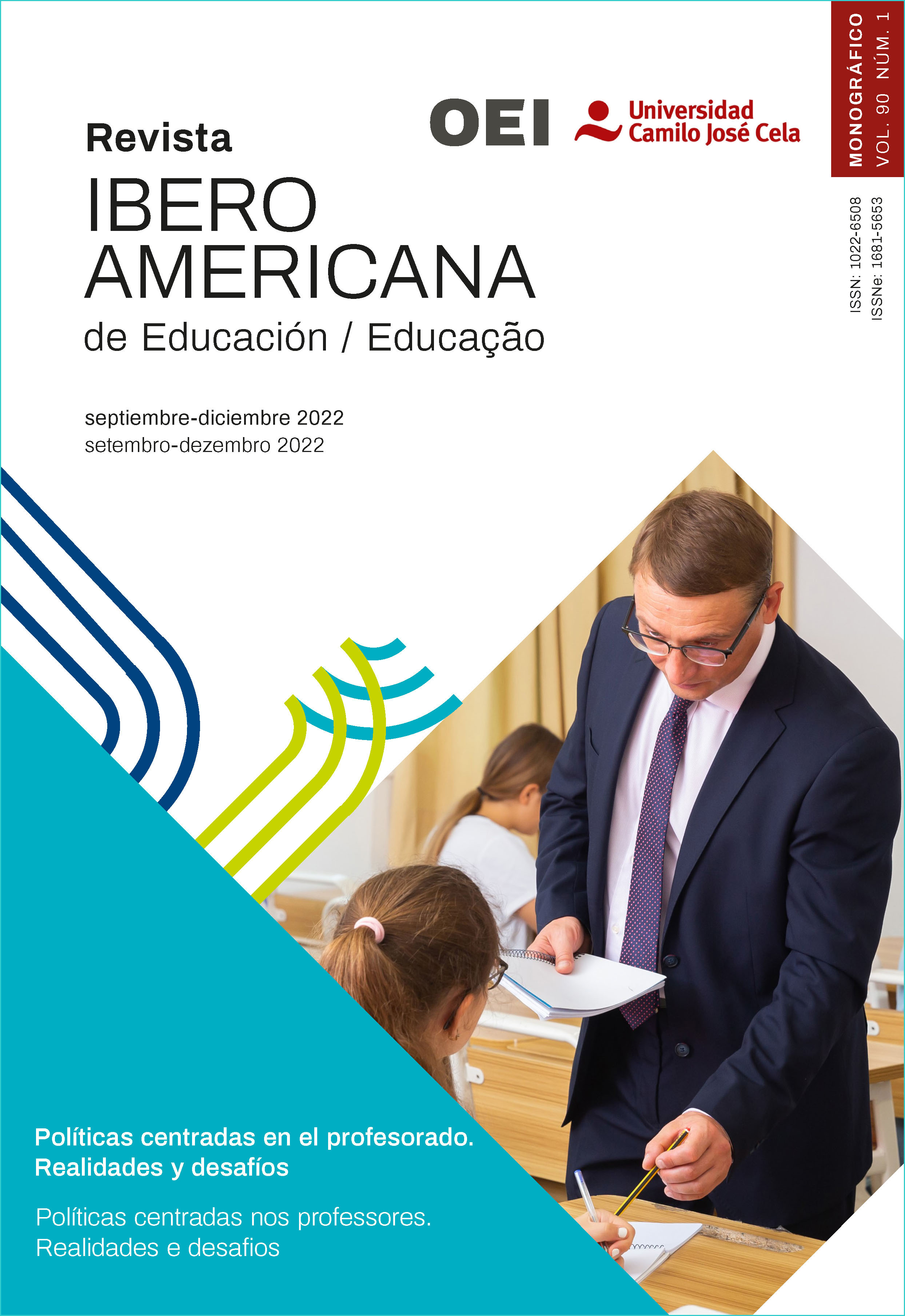The teacher at the center of the teaching effectiveness debate: meta-synthesis of the impact of teacher characteristics
DOI:
https://doi.org/10.35362/rie9015434Keywords:
The teacher at the center of the teaching effectiveness debate: meta-synthesis of the impact of teacher characteristicsAbstract
The purpose of this study is to synthesize the results of evidence accumulated from an extensive body of primary research through quantitative and qualitative synthesis studies (meta-analyses and systematic reviews) that examine the relationship between teacher characteristics and various measures of teaching effectiveness and quality. This meta-synthesis integrates the results of 6 papers that facilitate the description of their characteristics in their own context, together with an analysis of trends that transcend all of them. The results show that the cognitive and academic trajectory characteristics of teachers are integrated in broad models, although with a very moderate impact at best. Motivation studies are essentially descriptive, although they allow comparisons to be made according to the socio-economic and cultural context of teachers through the use of common measurement tools. This meta-synthesis shows that more large-scale research with validated instruments and comparable samples is needed. But above all, there is a need for research based on a solid theoretical foundation that addresses in an integrated manner the precise effects of teacher characteristics on teaching quality.
Downloads
References
* Aloe, A. M. y Becker, B. J. (2009). Teacher verbal ability and school outcomes: where is the evidence? Educational Researcher, 38(8). 612-624.
Atteberry, A., Loeb, S. y Wyckoff, J. (2015). Do first impressions matter? Predicting early career teacher effectiveness. AERA Open, 1(4), 1–23.
*Bardach y Klassen (2020). Smart teachers, successful students? A systematic review of the literature on teachers’ cognitive abilities and teacher effectiveness. Educational Research Review, 30, 1-21.
Chetty, R., Friedman, J.N. y Rockoff, J.E. (2014). Measuring the impacts of teachers I: Evaluating bias in teacher value-added estimates. The American Economic Review, 104, 2593-2632.
Cohen, J. (1988). Statistical power analysis for the behavioral sciences (2º ed.). Hillsdale, NJ: Erlbaum.
Coleman, J. S., Campbell, E. Q., Hobson, C. J., McPartland, J., Mood, A. M., y Weinfeld, E D. (1966). Equality of educational opportunity. Washington, DC: U.S. Department of Health, Education, and Welfare.
*D’Agostino, J. V. y Powers, S. J. (2009) Predicting Teacher Performance with Test Scores and Grade Point Average: A Meta-Analysis. American Educational Research Journal, 46(1), 146-182.
Darling-Hammond, L. (2010). Teacher education and the American future. Journal of Teacher Education, 61, 35-47.
*Fray, L. y Gore, J. (2018). Why people choose teaching: A scoping review of empirical studies, 2007–2016. Teaching and Teacher Education, 75, 153-163.
Gill, B., Shoji, M., Coen, T. y Place, K. (2016). The content, predictive power, and potential bias in widely used teacher observation instruments (REL 2017-191). Regional Educational Laboratory Mid-Atlantic.
Grissom, J.A. y Loeb, S. (2017). Assessing principals’ assessments: subjective evaluations of teacher effectiveness in low and high-stakes environments. Education Finance and Policy, 12, 369-395.
Hamre, B.K, Pianta, R.C., Downer, J.T., DeCoster, J., Mashburn, A.J. y Hamagami, A. (2013). Teaching through interactions: testing a developmental framework of teacher effectiveness in over 4,000 classrooms. The Elementary School Journal, 113, 461-487.
Hattie, J. A. (2008). Visible Learning: A Synthesis of Over 800 Meta-Analyses Relating to Achievement. Routledge
Hattie, J. A. (2011). Visible Learning for Teachers: Maximizing Impact on Learning. Routledge.
*Heinz, M. (2015). Why Choose Teaching? An International Review of Empirical Studies Exploring Student Teachers’ Career Motivations and Levels of Commitment to Teaching. Educational Research and Evaluation, 21(3): 258–297.
Hobson, A.J., Ashby, P., McIntyre, J. y Malderez, A. (2010). International approaches to teacher selection and recruitment. OECD education working papers. OECD Publishing nº 47.
Jackson, C.K., Rockoff, J.E. y Staiger, D.O. (2014). Teacher effects and teacher-related policies. Annual Review of Economics, 6, 801-825.
*Klassen, R, y Kim, L. E. (2019). Selecting teachers and prospective teachers: A meta-analysis. Educational Research Review, 26, 32–51.
Klassen, R.M. y Tze, V.M.C. (2014). Teachers’ self-efficacy, personality, and teaching effectiveness: a meta-analysis. Educational Research Review, 12, 59-76.
Kunter, M., Kleickmann, T., Klusmann, U. y Richter, D. (2013). The development of teachers’ professional competence. In M. Kunter, J. Baumert, W. Blum, U. Klusmann, S. Krauss y M. Neubrand (Eds.). Cognitive activation in the mathematics classroom and professional competence of teachers (pp. 63-77). Springer.
Van der Lans, R.M., van de Grift, W.J. y van Veen, K. (2018). Developing an instrument for teacher feedback: using the Rasch model to explore teachers’ development of effective teaching strategies and behaviors. The Journal of Experimental Education, 86, 247-264.
Lankford, H., Loeb, S., McEachin, A., Miller, L. C., y Wyckoff, J. (2014). Who Enters Teaching? Encouraging Evidence That the Status of Teaching Is Improving. Educational Researcher, 43(9), 444–453.
Mujis, D., Kyriakides, L, van der Werf, G., Creemers, B., Timperley, H. y Earl, L. (2014). State of the art -teacher effectiveness and professional learning. School Effectiveness and School Improvement, 25, 231-256.
Mujis, D., Reynolds, D., Sammons, Creemers, B. y Teddie, C. (2018). Assessing individual lessons using a generic teacher observation instrument: how useful is the international system for teacher observation and feedback (ISTOF)? School Effectiveness and School Improvement, 25, 231-256.
OECD (2005). Teachers matter. Attracting, developing, and retaining effective teachers. OECD education working papers. OECD Publishing.
Walsh, D. y Downe, S. (2005). Meta-synthesis method for qualitative research: a literature review. Journal of Advanced Nursing 50(2), 204–211.
Watt, H.M.G. y Richardson, P.W. (2012). An introduction to teaching motivations in different countries: comparisons using the FIT-Choice scale. Asia-Pacific Journal of Teacher Education, 40(3), 185-197
How to Cite
Published
Issue
Section
License
Any authors who publish with this journal accept the following terms:















